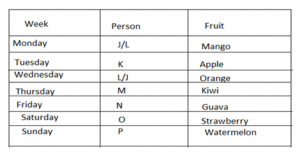Nutrient Deficiency Symptoms in Plants
Nitrogen
- General yellowing of lower leaves
- Inverted V shaped Yellowing in cereals
- Buttoning of cauliflower
- Proteolysis in cells
- Red leaf of cotton (also due to Mg toxicity)
- Sickle leaf disease
- Purple leaf disease
- Anthocyanin pigmentation
- Marginal necrosis
- Marginal Chlorosis of Grapes
- Potato blotchy
- Accumulation of Diamine putrescine
- Dying back of tips
- Blossom end rot of Tomato (BER)
- Bitter pit of apple
- Tip hooking
- Cavity spot of Carrot
- Internal browning of Lettuce
- Blackheart of Celery
- Milk fever in cattle
- Grass tetany of cattle
- Bronzing of citrus
- Sand drown of tobacco
- Red leaf or reddening of Cotton (toxicity)
- Inter- veinal chlorosis in lower leaves
- Sulfur
- Yellowing in upper leaves.
- Tea Yellow
- Internal necrosis of Mango , Aonla
- Internal cork of Apple, Tomato
- Browning / Hollow stem of Cauliflower
- Cracked stem of celery, Lucerne
- Lucerne Yellow / Alfalfa yellow
- Heart rot of Sugarbeet , Marigold
- Hard fruit of Citrus
- Die back of Apple
- Water core of Turnip
- Brown heart of Wheat, Turnip
- Sterility in Wheat
- Top Sickness of Tobacco
- Canker of Sugarbeet
- Drought spot of Apple
- Hen- Chicken disease of Grape
- Crown chocking of Coconut
- Fruit cracking of Tomato, Pomegranate
- Snakeheads in Walnuts
- Khaira Disease of Rice
- White bud of Maize
- Mottle leaf of Citrus
- Little leaf of Citrus
- Frenching of Citrus
- Little leaf of Cotton
- Rosette Disease
- Little leaf of Mango, Litchi
- Fern Leaf of Potato
- Leaf bronzing of Litchi
- Freckle disease in Sugarcane
- Grey specks of Oat
- Speckled yellow of Sugarbeet
- Pahaia Blight of Sugarcane
- Frenching of Tung Tree
- Crinkled leaf of Cotton (Toxicity)
- Marshy Spot of Pea
- Whiptail of Cauliflower
- Scald of Legumes
- Yellow spot of Citrus
- Khaira of Citrus
- Downward cupping of radish
- Interveinal chlorosis of young leaves
- Leaf blanching of Sugarbeet
- Bronzing of Rice (Toxicity)
- Green neck of Citrus
- Silver green leaf of Tomato
- Lime- induced Chlorosis
- Reclamation Disease
- Stem melanosis of Wheat
- Exanthema / Gumming
- Dieback of Citrus
- Wither tip of Apple
- Rough bark of Apple
Chlorine
- Brown centre of Potato
- Susceptibility of Fusarium rot
- Gray spot of Coconut
- Tip burn of Betel vine
- Jonathan spot of Apple : Water Deficiency
- Blackheart of Potato : Oxygen Deficiency
- Richness in Cauliflower: Temperature
- Cat face in Tomato : Temperature
- Blacktip of Mango : SO2, NO2
- Tip burn / Pansukh of Rice: Oxygen Deficiency




